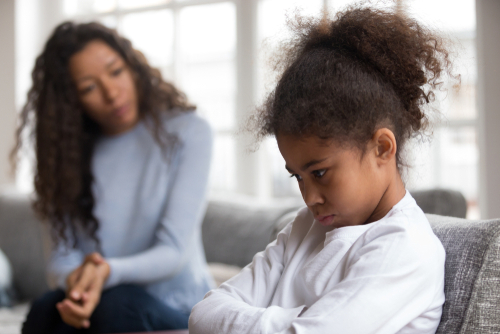Dialectical behavior therapy (DBT) is an evidence-based psychotherapy that emphasizes the psychosocial aspects of treatment. Psychologist Marsha M. Linehan developed DBT in the late 1980s as a means to more effectively treat chronically suicidal adults diagnosed with borderline personality disorder (BPD). It is founded on the principles of cognitive-behavioral therapy (CBT) and blends Eastern mindfulness techniques (e.g., awareness, mindfulness, and attentiveness to current situations and emotional experiences) to encourage acceptance and change. Dialectical behavior therapy focuses on teaching four behavioral skill modules: core mindfulness, distress tolerance, interpersonal effectiveness, and emotion regulation. DBT is comprised of three different therapy settings, including weekly individual psychotherapy sessions, weekly group DBT skills therapy sessions, and as-needed phone coaching to provide additional support between weekly individual and group sessions.
DBT For Children (DBT-C) Basics
The standard DBT is rarely used to treat young people, rather the adapted version known as DBT for children (DBT-C) is typically integrated into treatment plans, as it is a unique and effective approach for children and preadolescents. DBT-C has proven to be a successful treatment method for children experiencing a variety of mental health illnesses such as eating disorders, post-traumatic stress disorder, generalized anxiety disorder, dissociative disorders, depression, substance use disorder, etc. Further, it is helpful in treating issues related to emotional dysregulation. Emotional dysregulation is a term used within the mental health field to denote irrational, poorly modulated emotional responses, a highly common phenomenon among pre-adolescents. Preadolescence, also known as a pre-teen, is the stage of human development that occurs after early childhood and precedes adolescence.
According to Behavioral Tech, DBT for children was developed to “address treatment needs of pre-adolescent children with severe emotional dysregulation and corresponding behavioral discontrol.” DBT-C relies on the same principles, theoretical model, and therapeutic strategies of standard DBT. However, the DBT-C curriculum is re-framed in a way that considers and accommodates the developmental and cognitive levels of pre-adolescent children and provides age-appropriate services. DBT-C is comprised of three main categories, which are subdivided into the following subcategories:
- Decrease risk of psychopathology in the future
- Life-threatening behaviors of a child
- Therapy-destroying behaviors of a child
- Therapy-interfering behaviors of a child
- Parental emotion regulation
- Effective parenting techniques
- Target parent-child relationship
- Improve parent-child relationship
- Target child’s presenting problems
- Risky, unsafe, and aggressive behaviors
- Quality-of-life-interfering problems
- Skills training
- Therapy-interfering behaviors of a child
Behavioral Tech explains that the goal of DBT-C is to eliminate the “harmful transaction between a child and an environment and replace it with an adaptive pattern of responding to ameliorate presenting problems, as well as to reduce the risk of associated psychopathology in the future.” Through DBT-C a child will learn a variety of adaptive coping skills and effective problem-solving strategies. Akin to standard DBT, the components of DBT for children and preadolescents include individual therapy, group skills training sessions, working directly with parents, and as-needed 24-hour phone coaching to provide additional support to children and their families. The main difference between DBT and DBT-C is that the treatment target hierarchy in DBT-C has been greatly expanded to incorporate an emphasis on the parental role in attaining the child’s treatment goals.
The information above is provided for the use of informational purposes only. The above content is not to be substituted for professional advice, diagnosis, or treatment, as in no way is it intended as an attempt to practice medicine, give specific medical advice, including, without limitation, advice concerning the topic of mental health. As such, please do not use any material provided above to disregard professional advice or delay seeking treatment.


